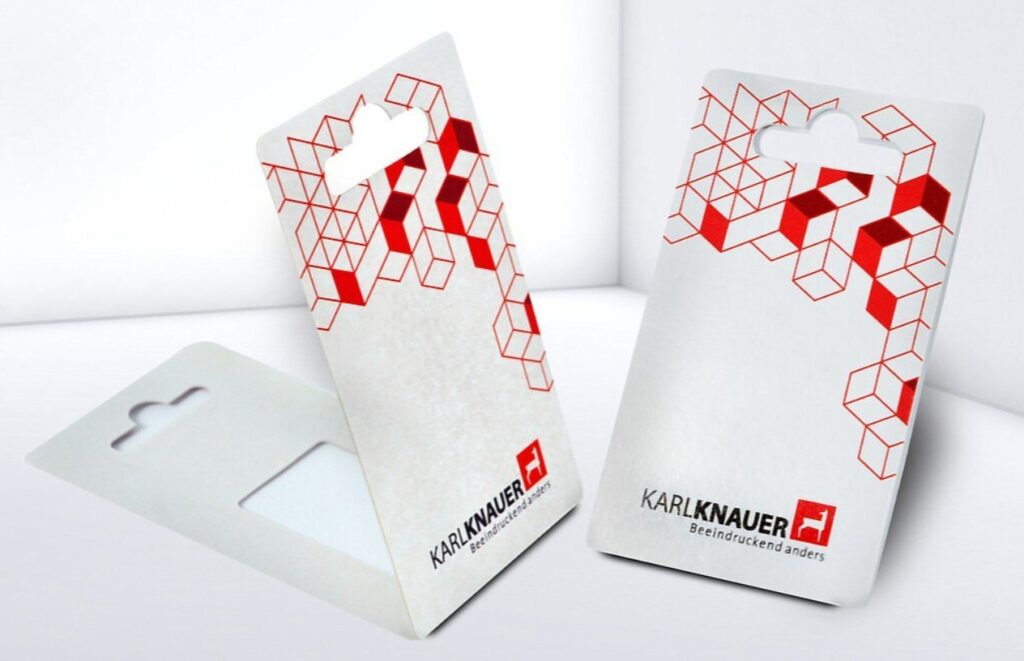Anticipating substantial growth, the blister card market is projected to surge from US$ 7,114.7 million in 2024 to an impressive US$ 12,983.7 million by 2034. The sales of blister cards are expected to witness a consistent Compound Annual Growth Rate (CAGR) of 5.70% throughout the forecast period. Notably, in the preceding year of 2023, the global market for blister cards was valued at US$ 6,699.3 million, indicating a promising trajectory for the industry as it advances into the future.
With the growth in online retail and increasing globalization in various industries, there has been a significant rise in the demand for effective packaging solutions in the manufacturing sector. Blister cards are a simple yet valuable component in the packaging and logistics sectors because they provide a clear view of the product before the buyer purchases it.
The rising demand for blister cards in the global marketplace can also be attributed to the performance of pharmaceutical industries post-pandemic. Blister cards, with transparent bodies and cardboard backs, offer enough room for companies to mention detailed drug information. This has significantly elevated their demand as consumers have become increasingly aware of the contents of their medications.
Request Sample: https://www.futuremarketinsights.com/reports/sample/rep-gb-18315
The emerging toy industry in Asian countries is also considered one of the primary reasons for the growth of the blister card market. These companies use blister cards to lure young children to buy their favorite toys. Sales of blister cards have also increased globally due to their growing importance in the electronics sector for the packaging of tiny components like USBs, pen drives, mice, and other items.
“As the world emphasizes sustainability, there is an excellent demand for eco-friendly packaging solutions like blister cards in the packaging landscape. Blister card manufacturers must incorporate technological features to track products during transit effectively. This will enhance the overall consumer experience, thus enhancing the global market value”, opines an FMI analyst.
Market Drivers:
- Rising Pharmaceutical Industry: The pharmaceutical sector is a significant driver for the blister card market. The need for secure and convenient packaging solutions for drugs and pharmaceutical products, along with the increasing demand for over-the-counter (OTC) medications, can drive the growth of blister card packaging.
- Consumer Preference for Convenient Packaging: Blister cards offer user-friendly and convenient packaging, making them popular among consumers. The ease of use, portability, and the ability to see the product without opening the packaging contribute to the market’s growth.
- Product Visibility and Protection: Blister cards provide a high level of product visibility while also protecting the contents from environmental factors such as moisture, light, and contaminants. This is particularly important in industries like pharmaceuticals and electronics.
- Customization and Branding Opportunities: Manufacturers can customize blister card packaging to meet specific branding and marketing requirements. This flexibility in design and branding can be a driver for companies looking to differentiate their products in the market.
- Prevention of Tampering and Counterfeiting: Blister packaging can serve as a tamper-evident solution, enhancing the security of products. This is crucial in industries where product integrity is paramount, such as pharmaceuticals.
Market Restraints:
- Environmental Concerns: The extensive use of plastic materials in blister card packaging raises environmental concerns. As consumers and regulatory bodies become more focused on sustainable and eco-friendly packaging options, the environmental impact of blister cards may pose a challenge.
- Costs of Production and Materials: The materials used in blister card packaging, especially those designed for specific functionalities (e.g., protecting against moisture or UV light), can be expensive. Additionally, the production process itself may involve complex machinery, contributing to higher overall costs.
- Limited Flexibility for Certain Products: While blister cards are suitable for many products, some items may not be well-suited to this type of packaging due to their size, shape, or other characteristics. This limitation in flexibility can be a restraint for certain industries or products.
- Alternative Packaging Solutions: The blister card market faces competition from alternative packaging solutions, such as pouches, bottles, and other innovative packaging formats. The availability of various packaging options may impact the adoption of blister cards in certain sectors.
- Regulatory Compliance: Stringent regulations regarding packaging materials and safety can impact the blister card market. Compliance with these regulations may require additional testing and certifications, adding complexity and cost to the manufacturing process.
Key Takeaways from the Blister Card Market
- The cardboard segment commands a substantial market share of 60.30% in 2024, emerging as the predominant choice.
- Blister cards are widely used in the pharmaceutical industry, accounting for a market share of 39.20% in 2024.
- The blister card industry in India is predicted to grow at a remarkable CAGR of 7.90% through 2034.
- The blister card market in China is predicted to rise at a whopping 7.30% CAGR through 2034.
- The blister card industry in Germany has the potential to increase at 6.50% CAGR through 2034.
- Australia’s blister card industry is predicted to rise at a 5.90% CAGR through 2034.
- The blister card market in the United States is predicted to grow at a CAGR of 5.60% through 2034.
Competitive Landscape of the Blister Card Market
The blister card market has numerous domestic as well as international players like Amcor, Berry Global, Sealed Air, etc. These players have generally tied up with key manufacturing units in their respective companies to provide an effective packaging solution that not only secures the product but also enhances its aesthetic appeal. Small players in the market have to continuously keep up with the changing trends in the market despite limited reach and financial resources.
Request Report Methodology: https://www.futuremarketinsights.com/request-report-methodology/rep-gb-18315
Key Players Are:
- Amcor
- Berry Global
- Sealed Air
- Sonoco
- Teijin
- UFP Technologies
- Huhtamaki
- WestRock
- Reynolds Group Holdings
- Graphic Packaging International
Recent developments
- Teijin introduced the Teijin Tesliner blister card, which is made of a thin, flexible polymer. The Tesliner blister card is lightweight and easy to open, making it excellent for packaging tiny products.
- A brand-new blister card composed of recycled PET was also introduced by Amcor: the Amfoil Eco. The Amfoil Eco is a robust, long-lasting blister card that is recyclable and environmentally friendly.
- Sealed Air launched the tamper-evident sealed air secure blister card, which features several security features, including a security perforation and a holographic label.
Buy Now/Purchase: https://www.futuremarketinsights.com/checkout/18315
Key Segmentations:
By Product Type:
- Clamshell
- Carded
By Technology Type:
- Cold Forming Technology
- Thermoforming Technology
By Material Type:
- Plastic
- PVC/Vinyl
- PET
- PE
- Others
- Aluminum
- Paper & Paperboard
- Others
By End-use Industry:
- Food
- Pharmaceuticals
- Veterinary & Nutraceuticals
- Medical Devices
- Electronics & Electricals
- Industrial Goods
- Consumer Goods
By Region:
- North America
- Latin America
- Europe
- Asia Pacific
- The Middle East and Africa (MEA)
About Future Market Insights (FMI)
Future Market Insights, Inc. (ESOMAR certified, recipient of the Stevie Award, and a member of the Greater New York Chamber of Commerce) offers profound insights into the driving factors that are boosting demand in the market. FMI stands as the leading global provider of market intelligence, advisory services, consulting, and events for the Packaging, Food and Beverage, Consumer, Technology, Healthcare, Industrial, and Chemicals markets. With a vast team of over 5000 analysts worldwide, FMI provides global, regional, and local expertise on diverse domains and industry trends across more than 110 countries.
Contact Us:
Future Market Insights Inc.
Christiana Corporate, 200 Continental Drive,
Suite 401, Newark, Delaware – 19713, USA
T: +1-845-579-5705
For Sales Enquiries: sales@futuremarketinsights.com
Website: https://www.futuremarketinsights.com
LinkedIn| Twitter| Blogs | YouTube


